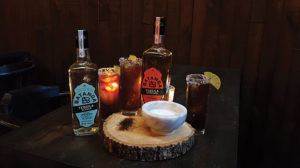Tequila – Made for Sipping, Not Just Slamming
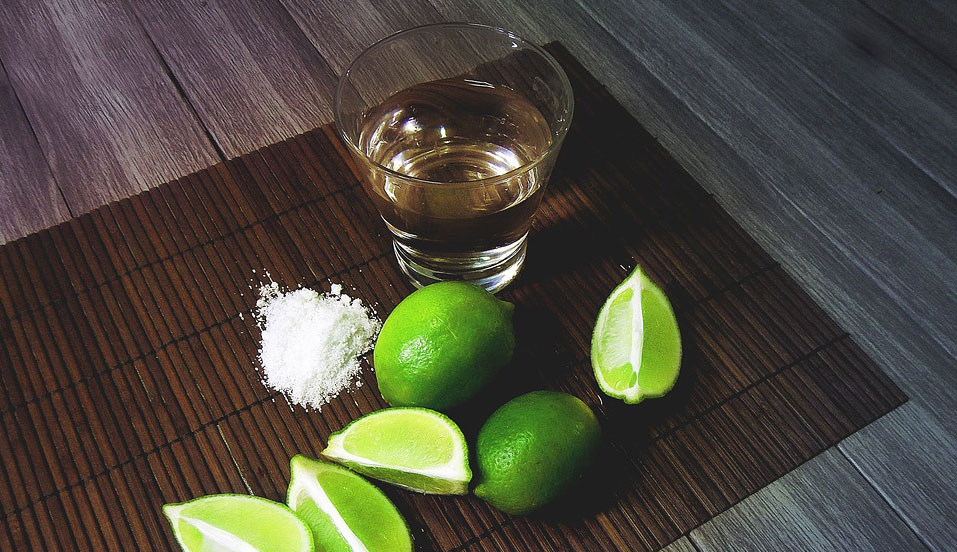
“Drinking tequila is more about the journey than the destination.”
Rainbow Rowell
Few spirits are as shrouded in myth and steeped in mystique as tequila, and for good reason. This subtle, sophisticated, spicy and instantly recognizable Mexican spirit has been around for centuries, which is plenty of time for a few good tall tales to surface.
And, the good news is, there are more ways to enjoy tequila, its not just a one hit slammer with lime and salt! Time has long since moved on from the tired old rhyme “one tequila, two tequila, three tequila, floor”. Thankfully following years of innovation, education, creativity and clever marketing, a new generation is appreciating this spirit in a completely new way. Out with the tequila shot glasses rimmed with salt, in with glasses with two-finger measures intended to be sipped and savoured. Modern tequila distillers have taken a page from whiskey and bourbon makers and are imbuing more wood and flavour characteristics by aging their expressions for longer periods.
Like champagne, cognac, and some fine wines, tequila can only be produced in five regions in Mexico—Guanajuato, Michoacán, Nayarit, Tamaulipas, and Jalisco.
History
The history of tequila began with the Aztec people making a fermented beverage from the agave plant which they called octli (later and more popularly called pulque), and the origins can be traced back to between 200-300 A.D.
In the 16th century Spanish conquistadores invaded Mexico and “were not too impressed” with the fermented beverage so set about experimenting to make wine from native plants, and discovered that fermented agave could be distilled to produce what was called at the time “Vino de Mezcal” or “Mezcal wine” named after the plant from which it was made.
The Spanish introduced distillation to Mexico, and it is likely that they were distilling something very similar to what is now recognised as tequila within 10 years of their arrival in Mexico.
Jumping forward to 1902 tequila acquired its official definition, distinctive from other agave -based spirits which continue to be referred to as “mezcal”.
In a move to take ownership of the term “tequila,” the Mexican government declared the term as its intellectual property in 1974. This made it necessary for tequila to be made and aged in certain areas of Mexico, and it also made it illegal for other countries to produce or sell their own “tequila.” The Tequila Regulatory Council was additionally created to ensure quality and promote the culture surrounding the spirit.
• Tequila is made from the weber blue agave plant. Other Mexican spirits, like mezcal, are from other varieties of the cactus-like plant.
• There are two types of tequila, 100 per cent agave or mixtos. The latter has 51 per cent agave sugar with the other 49 per cent coming from grain or sugarcane, giving them a more subtle flavour.
• Tequila is made from the blue agave plant.
• Tequila can be aged for years, and the older it is the darker it is.
• Mexicans sip tequila over ice as Europeans enjoy a whisky or rum. It’s also delicious in cocktails with a national favourite being the ‘Paloma’, tequila mixed with pink grapefruit juice.
• There are over 3,500 different registered Tequila brands but less than 150 distilleries in Mexico.
• A weber blue agave plant has to be 6-8 years old before it can be harvested.
• Tequila is the only spirit in the world that you can make synthetic diamonds from.
The three main categories of Tequila are:
Blanco – Un-aged and bottled within two months of distillation
Reposado – Aged between two-twelve months in barrels
Anejo – Aged between 1-3 years in small oak barrels
Two additional categories seen include:
Joven or Oro – mixture of Blanco and Reposado tequilas
Extra Anejo – Aged 3-5 years in oak barrels
In recent years the industry has been quietly and confidently talking about the potential of tequila and extolling it as the “next big thing”. While gin has been the main driver in spirit sales in recent years, tequila is quietly and steadily grabbing its share of the market. In fact, tequila sells more in the UK On-Trade than malt whisky or flavoured vodka and, as outlets are appreciating its potential it is now getting the prominence behind the bar that it deserves with larger, richer more intense ranges being stocked.
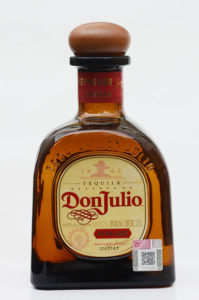 Interestingly, Hollywood heartthrob George Clooney cashed in when he sold tequila company Casamigos he co-founded to Diageo in 2017, it was reported that the actor pocketed a cool US$173 million (£136m) from the deal in the 12 months afterwards. This made him the highest-paid actor of 2018, despite not having appeared in a single film! (nice work if you can get it)!
Interestingly, Hollywood heartthrob George Clooney cashed in when he sold tequila company Casamigos he co-founded to Diageo in 2017, it was reported that the actor pocketed a cool US$173 million (£136m) from the deal in the 12 months afterwards. This made him the highest-paid actor of 2018, despite not having appeared in a single film! (nice work if you can get it)!
Results from drinks analysts IWSR show that the global market for tequila remains on a strong upward curve. Last year, volumes increased by 5% and value by as much as 11%. However, the challenge for the tequila industry will be to break out of its US and Mexican heartlands, which five years ago accounted for 83% of consumption and now make up nearly 85% of worldwide sales.
Premiumisation & “Terroir”
What is notable about the rise of the tequila category is the rapid pace of premiumisation. Jose Luis Hermoso, IWSR research Director explains why the premiumisation process is happening so quickly: “Unlike Cognac or Scotch, where premium segments are well established due to ageing legislations and trade bodies’ standards, tequila is pretty new to offering premium alternatives.” Consequently, there are gaps in the higher end of the tequila market to be exploited.
Hermoso gives credit to the role that Patrón Tequila has played in stimulating the rise of top end tequilas. Following Patrón’s lead, market leaders in the spirits sector have shifted their strategies in the hope of replicating the same results in the tequila category.
 The tequila category is growing rapidly with an increasing demand across most markets globally, says Matthew Sykes, Senior Director of International Marketing for Patrón Spirits International: “Innovation through new products within the portfolio are key to both pique the interest of consumers and trade but also to reinforce the quality of the core range. It is also an opportunity to continually trade consumers up into products within the portfolio that are even more special and unique.”
The tequila category is growing rapidly with an increasing demand across most markets globally, says Matthew Sykes, Senior Director of International Marketing for Patrón Spirits International: “Innovation through new products within the portfolio are key to both pique the interest of consumers and trade but also to reinforce the quality of the core range. It is also an opportunity to continually trade consumers up into products within the portfolio that are even more special and unique.”
“Consumers are looking to try new things and experiences, through brands that deliver both quality and a story. Super premium tequila is establishing itself alongside spirits and liqueurs commonly perceived as more sophisticated and complex, such as gin, cognac and whisky and as such there are a lot of opportunities that can be unlocked within the category.”
“Over the years, the evolution of Super Premium Tequila has seen a shift in perception from the stereotypical shot with lime and salt to a more premium serve that can be sipped, in cocktails or as a long drink. This shift is testament to the growth of the category internationally and the willingness of consumers and trade to be more adventurous once they are armed with the right information and inspiration”
Recognising not only the environmental factors for tequila production, but also the distinctive and characteristic flavours and aromas of tequila imparts, Shona Daly, marketing manager at Lighthouse Brands says : “A few years ago, I attended a Villa Lobos tequila masterclass in London by legendary master distiller Carlos Camarena. Listening to Camarena talking about the influence of location, in the taste of 100% agave tequila I realised that tequila was the only spirits category that had as much ‘terroir’ as a good wine.
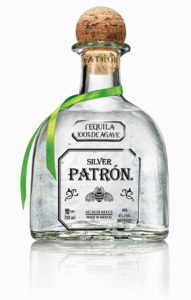 “The similarity with wine doesn’t stop with terroir but also extends to barrel ageing, where a good aged tequila will show integrated oak flavours which doesn’t overpower the taste of the tequila, a bit like a good barrel aged red wine. Camarena further explained that the best way to describe his Villa Lobos tequila range – Blanco, Reposado (12 months aged), Anejo (2 years aged) and Extra Anejo (4 years aged) – was by using his framed picture analogy.”
“The similarity with wine doesn’t stop with terroir but also extends to barrel ageing, where a good aged tequila will show integrated oak flavours which doesn’t overpower the taste of the tequila, a bit like a good barrel aged red wine. Camarena further explained that the best way to describe his Villa Lobos tequila range – Blanco, Reposado (12 months aged), Anejo (2 years aged) and Extra Anejo (4 years aged) – was by using his framed picture analogy.”
“For him his Blanco is like going to his agave field and taking a picture of ripe agave plant and then hanging that unframed picture on his wall. In a good Blanco you should taste the ‘unframed’ raw, slightly sweet agave flavours and for his Reposado, Anejo and Extra Anejo aged tequilas he takes his agave picture and adds a wooden frame around the picture and with extra ageing the frame gets a bit thicker every time . The message is that the picture of the agave plant should always stay the focal point in the taste of a good aged tequila and that the wooden frame should always compliment the picture and never obstruct it.”
Outside of the US and Mexico, sales of tequila are increasing, in recent years tequila sales in the on and off trade rose by over 37% to over £180 million. Miles Beale of the Wine Spirit Trade Association (WSTA) : “the trend is moving away from shots and strongly towards high-quality cocktail combinations and increasingly sophisticated sipping products”.
While it is still popular as a shot accompanied by a wedge of lime, Tequila has taken on a new mantle as a spirit to be sipped and savoured rather than consumed in record time, and operators should recognize the category needs to shake off the perception that its chief consumption occasion is as a cheap ‘shooter’ on a night out. Evidence shows that changing attitudes to alcohol among younger drinkers are making the concept of ‘shots’ increasingly dated.
According to the country’s top bartenders Tequila is not only a growing trend but is also being consumed in a completely different way.
Tequila is now the must-stock spirit in the UK’s most popular bars where it is used as a base for a range of cocktails, as well as being drunk straight as a sipping experience.
Sophie Bratt, formerly Bar Manager at Harvey Nichols, OXO Tower, now at Aqua restaurant Group said: “Agave spirits – especially Tequila – are now being acknowledged and accepted more widely as a crafted product with a plethora of rich flavours. It is these rich natural flavours that the production and ageing of the product impart that allow bartenders to create sophisticaed drinks which in the past would have been resigned to whisky and gin bases, opening up the world of Tequila drinks.
“I believe that attitudes to drinking have changed through knowledge – we drink to enjoy, taste and savour excellence. When guests tell me they don’t like tequila, it’s almost like a mission as I believe there is a Tequila/Tequila drink for everyone”!
“Where Mexican tradition meets British Sophistication”
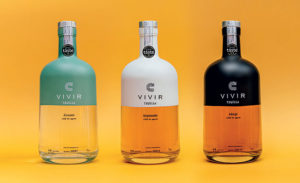 Capitalising on the U.K.’s taste for super premium tequilas, friends Paul and Nav decided, after working with Agave for over 16 years, that it was time to create their own, very special range of Tequilas. VIVIR Tequila has taken the friends 3 years to perfect and is the first independent premium British Tequila brand with a whole range. “The spirits have been specially crafted to help change perceptions in the UK of what Tequila can be – no longer should it be seen as a drink that needs to be washed down with salt and lime,” said Paul.
Capitalising on the U.K.’s taste for super premium tequilas, friends Paul and Nav decided, after working with Agave for over 16 years, that it was time to create their own, very special range of Tequilas. VIVIR Tequila has taken the friends 3 years to perfect and is the first independent premium British Tequila brand with a whole range. “The spirits have been specially crafted to help change perceptions in the UK of what Tequila can be – no longer should it be seen as a drink that needs to be washed down with salt and lime,” said Paul.
“With our on-the-ground educational, activational and financial support – VIVIR Tequila has been embraced by both the on and off trade and has become one of the fastest growing independent spirits in the UK. We even became the first Tequila to ever win Gold Awards at the Great Taste Awards for their whole range – cementing their status as one of the best producers out there” added Paul.
Cocktails
The key, according to IWSR to gentrifying the tequila category is through the public’s interest in cocktails. Classic cocktails like the Margarita, The Negroni and of course the Tequila Sunrise will prompt drinkers to re-evaluate tequila and view it as a high-end ingredient in some of their favourite cocktails as opposed to a low-priced ‘shot’ at parties.
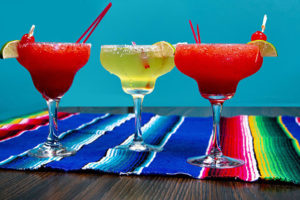 Patrón tequila released data showing that more than half of UK drinkers are more likely to order tequila cocktails over a tequila shot.
Patrón tequila released data showing that more than half of UK drinkers are more likely to order tequila cocktails over a tequila shot.
The research involved 2000 drinkers in the UK, with 65% saying they always consume tequila in cocktails and 41.7% said tequila is best enjoyed in a variety of serves.
However just 23% of drinkers knew how tequila is made and only 10% understood that aged tequila can have a similar colour to whisky.
London’s Tequila and Mezcal Fest founder, Eduardo Gomez, said: “It’s no surprise to see cocktail culture is flourishing. Tequila has come a long way over the past few years, in the UK and globally.
“Tequilas like Patrón are leading the way on showing premium expressions and how they mix well in a wide array of drinks, from the Tequila & Tonic, to the iconic Paloma and even as an alternative to whisky in the Old Fashioned.
“Knowledge of tequila is a bigger challenge as the spirit has such a rich history and tradition that consumers are only just starting to learn about.
The survey, which was published by Patrón Tequila, found that despite Tequila’s association with shot culture, more and more drinkers are selecting cocktails and slow sipping Tequila serves.
The Batanga Cocktail
In the western Mexico town of tequila, there is a small, non-descript cantina called La Capilla-home of the Batanga, a simple drink created in the 1950s by Don Javier Delgado Corona, the bar’s owner.
The Batanga is simple: nothing more than tequila, coke and fresh lime juice, served in a tall glass with a salted rim.
But as Don Javier will tell you, its flavour isn’t only in the ingredients-it’s the big knife, which he uses to stir the cocktail-that’s the secret to a perfect Batanga.
Villa Lobos High Noon Cocktail
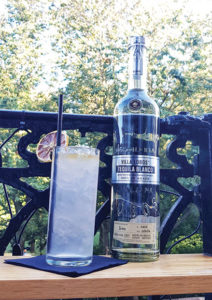 • 35ml Villa Lobos Blanco
• 35ml Villa Lobos Blanco
• 25ml Choya Yuzu
• 20ml Briotett Fruits de la Passion
• 10ml Sugar Syrup
• Topped with Tonic and 4 dashes of orange bitters
A story of a generation spanning alliance between two families, the Camarenas and the Sklars, respectively tequileros and spirits producers and importers, since the mid 1800’s. Between them, they bring 10 generations of tradition and heritage to their work.
Tequila Villa Lobos is made by one of the Worlds most respected and trusted authorities on tequila, the Camarena family.
Carlos Camarena and Dale Sklar – both sons of fathers, grandfathers & even great grandfathers who spent their lives in the spirits business and learned almost all from them – unite their families to create this unique, soft, gentle tequila. It is 100% hand made from harvest to bottling, following the old-fashioned methods used since 1937.
The 100% blue agaves entirely grown on the Camarena family plantations in Los Altos, only the very finest plants with the highest fructose level are used. The Blanco is uniquely kept in steel tanks for at least 6 months to enhance flavours and smoothness. Then Reposado, Añejo, Extra- Añejo, 10 years old are transferred into American oak barrels, previously used for Bourbon maturation.
Villa Lobos is a handcrafted tequila made with passion and care in the traditional way; the fragrant agave flavours and incredible smoothness are a testament to the skill of the maker.
www.vivirtequila.com
www.lighthousebrands.co.uk
www.patrontequila.com
www.emporiabrands.com

